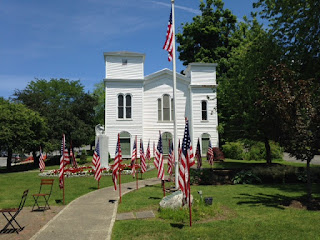I noticed in a rest stop along the road, driving from New York state to Nova Scotia, Canada, a paper-towel dispenser with the brand name Marathon. Many know this word as the twenty-six-(or so)-mile foot race, and many also know the origin of this word in a place name in ancient Greece, a plain about twenty-six miles from Athens, whose name means “fennel field.” According to legend (and the Dictionary of World Biography, vol. 1 by Frank Northern Magill, Taylor & Francis, 1998), on this plain in 490 BC, Greek forces under the Athenian general Miltiades beat a Persian army; a runner named Philippides (or Pheidippides) ran the twenty-six or so miles to Athens to deliver the news, and then died, possibly because this same runner had earlier run one hundred and forty miles both to Sparta to ask the Spartans for help and then back to Marathon. Today in English marathon can also be used as an adjective to mean “great, large, lasting a long time or involving a lot of effort.” Marathon seems like a good name for a paper-towel dispenser that can be used twenty-four hours a day at a highway visitor center or rest stop, every day of the year.
P.S. Also -athon or -thon has become a noun-forming suffix in English words like telethon, radiothon, phonathon, dance-athon, events that extend over hours or days to raise money for charitable causes using television, radio, telephones, or dancing.




